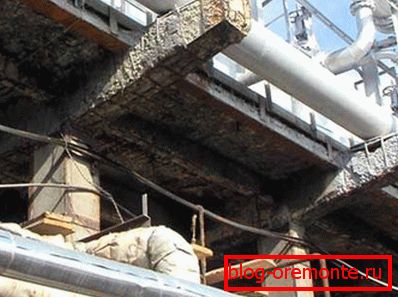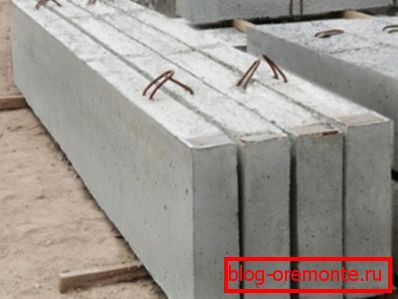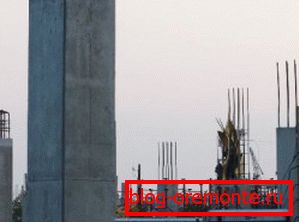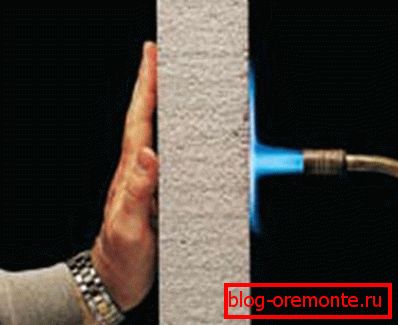Fire resistance of concrete: the impact of high temperatures
Among the characteristics of concrete, one of the most important parameters is fire resistance, which is responsible for the resistance of the material to open fire in case of fire. In this article, we will take a closer look at what fire resistance is, on what it depends on and how this indicator can be in different types of concrete.

General information
First of all, it should be said that people often confuse the fire resistance of reinforced concrete structures with heat resistance, and these are somewhat different concepts:
- Fire resistance - material resistance to short-term exposure to open fire in case of fire
- Heat resistance - it is the ability of concrete to maintain its properties under prolonged or even constant exposure to high temperatures during operation of thermal units.
As a result of the insignificant thermal conductivity of the material, with a brief exposure to high temperature, concrete and reinforcement, which is located under the protective layer, do not have enough time to warm up sufficiently.
Therefore, it is much more devastating for concrete to pour water over it, which occurs when extinguishing a fire. When this occurs, the cracking of the material, the violation of the protective layer and, as a consequence, the exposure of the reinforcement.
High temperatures of concrete
Under the influence of high temperatures, various negative processes occur in concrete:
| 250 - 300 degrees Celsius | Strength decreases, which is accompanied by the decomposition of calcium oxide hydrate. At the same time, the structure of the cement stone is destroyed. |
| 550 degrees Celsius | At this temperature, quartz grains, which are present in sand and crushed stone for concrete, begin to crack and quartz passes to another instance, tridymite. Cracking is caused by an increase in the volume of quartz grains. At the same time, microcracks occur in the structure of the reservoir at the points of contact between the cement stone and the filler. |
| Over 550 degrees Celsius | With a subsequent increase in temperature, other structural elements of concrete are also destroyed. |

Жароупорные бетон
The data from the table refer to ordinary concrete. However, as a result of scientific and practical research, the possibility of creating heat-resistant concrete based on Portland cement, which is able to withstand temperatures of 1100 degrees and even higher, was opened.
To do this, alumina silica or finely ground finely ground calcium oxide additives are added to the composition of the material, which is released as a result of cement hydration.
In addition, heat-resistant and refractory materials are used as fillers, such as:
- Brick rubble;
- Blast furnace slag;
- Tuf;
- Chamotte;
- Andesite;
- Basalt;
- Chrome iron ore.

The maximum temperature that such concrete can withstand depends on the fillers. For example, when using chamotte, the maximum temperature is 1100-1200 degrees Celsius. If the structure is not subjected to heating above 700 degrees, clay brick battle or blast furnace slag can be used as a filler.
Thus, it is possible to prepare heat-resistant concrete even with your own hands on the construction site.
Tip! After the construction of reinforced concrete structures often there is a need for their machining. In this case, use special equipment with diamond nozzles. For example, builders often perform diamond drilling of holes in concrete, as well as cutting reinforced concrete with diamond circles.

Fire resistance of reinforced concrete structures
Fire resistance of reinforced concrete structures зависит от многих параметров:
- The dimensions of the section of the structure;
- The thickness of the protective layer;
- Diameter and amount of reinforcement;
- Load on the structure.
With a decrease in the density of the material, as well as an increase in its thickness, the limit of fire resistance increases. It should also be noted that this indicator depends on the static scheme and the type of support of the structure. Therefore, before pouring, experts must perform a fire resistance calculation of reinforced concrete structures.

Horizontally located structures
Free-supported single-span bending elements when exposed to fire are destroyed as a result of heating of the lower longitudinal reinforcement. Therefore, their limiting temperature depends on the class of reinforcement, the thermal conductivity of the material, as well as the thickness of the protective layer.
These designs include the following types of products:
- Flooring and paneling;
- Beam slabs;
- Runs;
- Beams, etc.
Note! In runs and beams, the fire resistance limit depends largely on the width of the section.
It should also be noted that with the same parameters, the fire resistance of the beams and slabs is different, due to the fact that the beams during a fire are heated from three sides.
Thin-walled bending structures may prematurely collapse under the influence of fire along oblique sections at the supports. Such damage is prevented by installing vertical frames length? span on at support sites.
Bent thin-walled structures include:
- Ribbed and hollow panels;
- Beams and girders;
- Floorings, etc.

Supported along the contour of the plate have a much greater fire resistance than the bent elements. Such plates are reinforced in two directions, so their fire resistance depends on the ratio of the length of the reinforcement in the long and short openings.
At square plates, the critical temperature is 800 degrees Celsius. With the increase of one of the sides, the critical temperature decreases, respectively, the fire resistance limit also decreases. If the aspect ratio is more than four, then the fire resistance of the plates is the same as that of the structures that are supported on two sides.
Note! From the point of view of fire resistance, reinforcement steel of grade 25G2S class A-III is the most durable. Its critical temperature is 570 degrees Celsius. I must say that the price of fittings made of such steel is relatively high.

Columns
The fire resistance of structures such as columns also depends on a number of factors:
- The load on them (central and off-center);
- Cross-sectional dimensions;
- Type of coarse aggregate;
- Percent reinforcement;
- The thickness of the protective layer in the longitudinal reinforcement. Therefore, when pouring the structure, the instruction must be strictly followed.
The destruction of columns under the influence of open fire occurs as a result of a decrease in the strength of concrete and reinforcement. Moreover, an eccentric load reduces their fire resistance.
In cases where the load occurs with a large eccentricity, the fire resistance of the structure depends on the thickness of the protective layer in the area of the tensioned reinforcement. In other words - the nature of the work of the columns when heated is similar with simple beams. If the load occurs with a small eccentricity, then the design can resist the effects of fire, as well as centrally compressed columns.
Обратите внимание! Fire resistance колонн, выполненных из раствора на гранитном щебне, на 20 процентов меньше, чем колонн на известковом щебне.

Fire resistance of cellular concrete
As mentioned above, the lower the density of the material, the more resistant it is to the effects of fire. Therefore, the fire resistance of aerated concrete blocks and other products from cellular concrete is higher.
According to numerous studies that were conducted by the Swedish Technical University, as well as the Finnish Technical Center, when heated, the strength of cellular concrete is changed as follows:
- Increasing the temperature to 400 degrees - the strength of the material increases to 85 percent.
- Warming up to 700 degrees - strength is reduced to the original figures.
- Warming up to 1000 degrees - strength decreases by 86 percent and this figure stabilizes.
Thus, the fire resistance of foam concrete blocks is about 900 degrees. For comparison, ordinary concrete at a temperature of about 400-700 degrees loses the bulk of its strength.

Therefore, this material is widely used in the construction of buildings in which an increased level of fire hazard is planned.
Conclusion
As we found out, the fire resistance and heat resistance of concrete depend on a number of factors, ranging from the filler material to the characteristics of concrete structures. Therefore, this indicator should be paid attention to at all stages of construction.
From the video in this article, you can get more information on this topic.